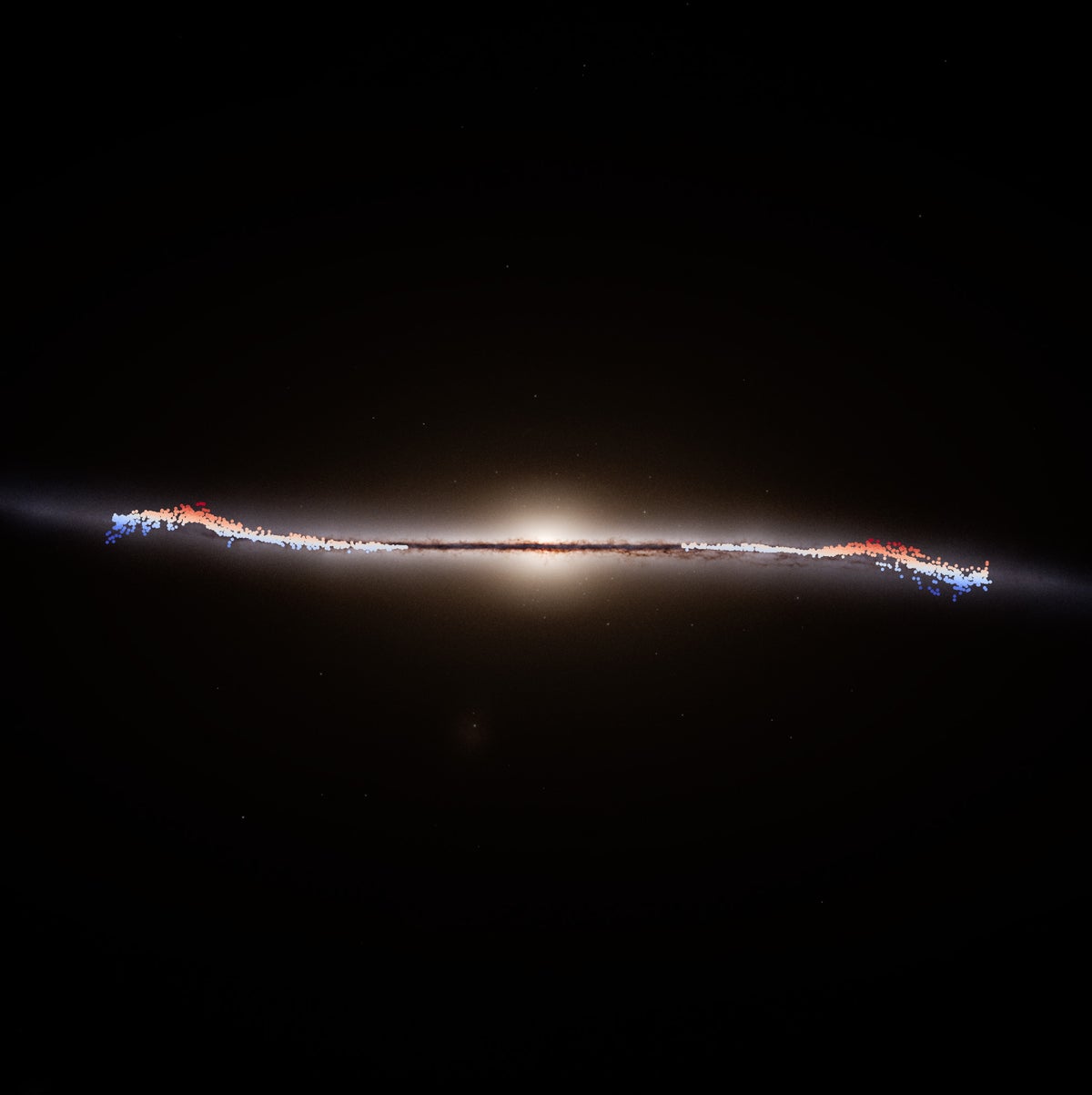
"First, a quick overview: the Milky Way is classified as a disk galaxy, with a broad circular collection of stars, gas and dust about 120,000 light-years across. It's a few thousand light-years thick, so flat is at least a decent adjective to use for it. In the center is a central bulge of stars, and the whole thing is surrounded by a vast halo of stars and dark matter about a million light-years wide. That last bit is important."
"So it's confession time: I've been lying to you. I've said on many occasions that our Milky Way galaxy has a flat disk (like in this column or this one). But it's not really flatnot even for a reasonable definition of the term. Now, in my defense, I wasn't lying per se; I was simplifying. That's a perfectly acceptable and even advantageous thing to do in science."
The Milky Way is a disk galaxy roughly 120,000 light-years across and a few thousand light-years thick, with a central bulge and a vast halo of stars and dark matter extending to about a million light-years. The visible disk appears flat from Earth, but the outer disk is warped and flared, rising on one side and dipping on the other. Many similar disk galaxies also show warps and waves. Simplifying assumptions that treat the disk as perfectly flat are useful for initial models, but adding realistic warping improves physical understanding.
Read at www.scientificamerican.com
Unable to calculate read time
Collection
[
|
...
]